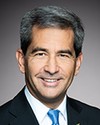I do believe that, if we get the surgeon general's office to take the responsibility for determination of attribution of service, there will be pressure inside the surgeon general's office, remembering again that we're already dealing with these 1,500 cases and we are tracking them and doing all the medical things we need to do and keeping the files. I think there would be some burden on the surgeon general's office.
As for moving large swaths of people one way or the other, I'm not sure. If we did develop a more efficient, effective model, I think the last thing we need to do is to start pulling resources out of this environment on either side. I think we can refocus those resources. We can start having conversations about what the future would look like instead of waiting for the releasing member to explain to several entities what's happened in the past.
I believe there's opportunity here. No one has asked me how they should set it up, but if someone would like me to sit on that committee, I would do so. I talk, and I talk very basic, and I appreciate your comment that I have a logical, no-nonsense approach to dealing with things. They're very complex, but they're also built by us. We have built these complex systems, so I think we can fix them.
As to the moving of staff and who does what, I believe we just need to clear the lines of responsibility a little bit. If the member is serving, he's the responsibility of the Canadian Armed Forces, and until the uniform comes off, I think we need to do everything in our power to make sure that person is positioned to move forward.




